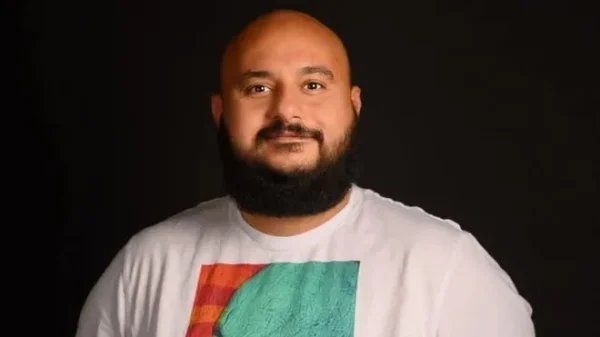Ukraine- Russia Crisis Timeline
As the war in Ukraine continues to escalate, a look at the long history between Ukraine and Russia helps gather an understanding of how the stage was set for this conflict.
The origins of the current crisis between the two nations stretches back to the fall of the Soviet Union in 1991, when Ukraine became an independent state. Ever since the collapse of the Soviet Union, Russia has felt threatened as they lost key military installations in former Soviet states, which acted as a buffer to protect the heartland of the nation from an attack. They also lost many ethnic Russians living in former Soviet nations, where their national pride fueled their desire to escape Russian dominance. On top of that, these former Soviet nations became more interested in gaining relationships with the United States, Western Europe, and East Asia. Below is a list of key years that events took place which built tension between Ukraine and Russia:
1949: Creation of NATO
The United States created the North Atlantic Treaty Organization (NATO) following World War II. Under NATO, all participating nations pledge to defend one another if any member were attacked. As a part of the alliance, the United States maintained a large, permanent military in Europe to display power and defense alliances during the Cold War. Although the Cold War ended and the Soviet Union fell, NATO still exists today.
Ukraine is currently not a part of NATO, but past discussions of them joining the organization has left Russia feeling extremely threatened. This is for good reason: the alliance was formed in response to US and European concerns about the Soviet Union.
The original nations involved in NATO included Belgium, Canada, Denmark, France, Iceland, Italy, Luxembourg, the Netherlands, Norway, Portugal, the United Kingdom, and the United States. Now the alliance consists of 30 independent nations including: Albania, Belgium, Bulgaria, Canada, Croatia, Czech Republic, Denmark, Estonia, France, Germany, Greece, Hungary, Iceland, Italy, Latvia, Lithuania, Luxembourg, Montenegro, the Netherlands, Northern Macedonia, Norway, Poland, Portugal, Romania, Slovakia, Slovenia, Spain, Turkey, the United Kingdom, and the United States. It is important to note all the nations that were formerly in the Soviet Union, including Latvia, Lithuania, and Estonia. It is difficult to see why Russia is only attacking Ukraine.
1991: Collapse of Soviet Union
The Soviet Union collapsed, creating 15 independent states formerly under Soviet control. This means that Ukraine became an independent nation, however it contained a majority ethnic Russian population on the east side of the nation, close to the border they share with Russia. Many Russians do not understand why they would want independence, as they consider Ukraine as a part of Russia.
2008: Discussion of joining NATO
Ukraine discusses the possibility of joining NATO, which left Russia feeling vulnerable, as they viewed this as a serious threat to security.
2014: Annexation of Crimean Peninsula
Russia used military force to annex Crimea, a peninsula lying between the Black Sea and Sea of Azov in southern Ukraine. Russia reclaimed it as part of their nation, and contributed to the belief that they would use force to invade and reclaim the entire nation of Ukraine. This was the start of the conflict that is currently ongoing.
2021-2022: Russia invades Ukraine
Russia builds up military forces and invades Ukraine on February 24th, 2022. The two nations have been involved in the war ever since. Nations have placed sanctions on Russia, harming their economy in hopes that Russia will retreat. Russians do not have the full story on the war due to state-sponsored media pushing the narrative that the west is causing all their issues.
Why Ukraine?
Even with all this information in mind, it is still confusing why Russia began to invade Ukraine at this time. Not only is the timing of the invasion confusing, but also why they are going after Ukraine specifically, out of the other 14 former Soviet countries that are smaller or would simply be easier to invade. To put into perspective, Ukraine is the seventh most populous country in Europe, and the most populous out of the former Soviet controlled states. This would help assume that it would be the hardest to invade, as we are now seeing because an invasion Russia thought would take a few days has grown into a war lasting just over two months.
Although Putin’s intention for the war (which he continues to simply call a “special military operation”) remains unclear, a simple look at Ukraine’s natural resources show how the reclamation of the nation could greatly help Russia’s economy.
Ukraine is abundant in metal ores, non-metal ores, and energy resources. The nation only accounts for 0.4% and 0.8% of the Earth’s land surface and world’s population respectively, yet the country has approximately 5% of the world’s mineral resources. Ukraine also has the second-largest known gas reserves in Europe, apart from Russia’s gas reserves in Asia, and gas exported from Russia to other European countries like Germany has to travel through Ukraine, costing Russia a transit fee equivalent to about $7 billion. Also, Ukraine is second globally in gallium extraction, fifth globally in germanium extraction, sixth globally in titanium extraction, globally in manganese extraction, and seventh largest in iron extraction. Other abundant resources Ukraine exports include iron ore, corn, semi-finished iron, and seed oils.
Although this is likely not the main reason for the invasion, it shows there are reasons why Russia is invading Ukraine. Unfortunately, it is super unlikely that Putin will give any true reason for why he is doing so, especially since he has yet to address this conflict as a war.
Sources:
https://amp.economist.com/international/2022/02/12/how-russia-has-revived-nato
https://www.choices.edu/search/ukraine/
https://commons.wikimedia.org/wiki/File:Ethnolingusitic_map_of_ukraine.png




